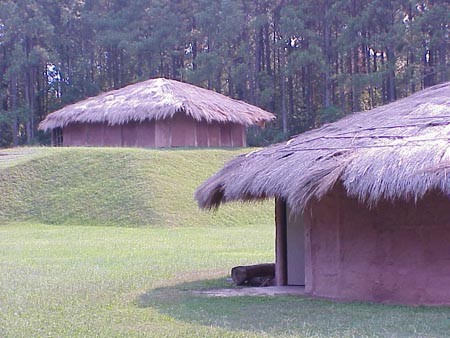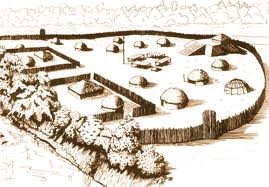Town Creek Indian Mound
Introduction
Text-to-speech Audio
Images
The huts at Town Creek Indian Mound

A sketch of the entire Indian mound

Backstory and Context
Text-to-speech Audio
Town Creek Indian Mound is the only state historic site in North Carolina that is dedicated to decoding the state's Indian background. It has been the focus of an extensive archaeological investigation since 1937. This was when the site was taken by the state. The mound area at Town Creek is a rectangular block 120 feet by 140 feet, encompassing the mound. It was named the "Frutchey Mound" after Lloyd Frutchey. He conveyed the site to the state in 1937.
Between the years 1937 and 1942, archaeological work was supported by the federal government. In 1937, excavations were conducted through the Works Progress Administration (WPA). From 1938 to 1939, excavations were done through the National Youth Administration. The WPA conducted the archaeology from 1940 to 1942. Between 1945 and 1955, the archaeological excavation was completed. Then all of the research and investigations were funded by North Carolina.
The Indians believed that their burial sites were more sacred if they made them higher than the normal ground level. They believed it was "closer to the heavens." This is demonstrated at Town Creek with the mounds significantly higher. There have been many artifacts discovered at the Town Creek Indian Mound. Artifacts including Pee Dee sherds which were made from pots finished with carved wooden paddles. There were even grooved axes and arrowheads found along with clay pipes. There is a lot of Indian history that archaeologists cease to be amazed about at the Town Creek Indian Mound.
Cite This Entry
Woodrum, Alyssa. "Town Creek Indian Mound." Clio: Your Guide to History. January 23, 2015. Accessed March 29, 2025. https://theclio.com/tour/432/16

